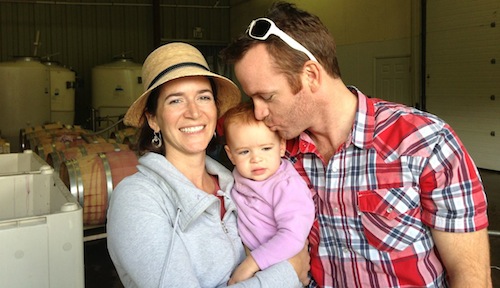
GARDEN CITY, Idaho — At first, Melanie Krause wondered if life in arid Eastern Oregon would doom her relationship with her college boyfriend.
It turned out to be the starting point for one of Idaho’s top winemakers.
Krause, 36, gives much of the credit for the success of Cinder Wines in Boise to the five years of training she received while working for Chateau Ste. Michelle. And that might not have happened were it not for Joe Schnerr, whom she met while both were students at Washington State University.
“When I got out, I had a general biology degree and a Spanish degree and had agriculture in mind,” Krause said. “My husband, Joe — my boyfriend at the time — moved to Umatilla, Ore., to run a chemistry lab there. I thought, ‘Umatilla. That’s going to be the end of our relationship!’ But I looked around and realized right across the river are all the Washington vineyards. I thought, ‘That would be fabulous. I’ve got a good background for that.’ ”
Her language skills and the research in WSU’s winter wheat lab made Krause an easy hire for Ste. Michelle Wine Estates in 2001. She spent two seasons as a vineyard technician before moving into the winery as an enologist.
In time, she earned an assistant winemaking position at Ste. Michelle’s Canoe Ridge Estate red wine production facility, working alongside future Columbia Crest winemaker Juan Muñoz Oca. Her supervisors were Ron Bunnell, now at his eponymous winery in Prosser, Wash., and Chateau Ste. Michelle winemaker Bob Bertheau.
“They were fantastic with the education they gave me,” Krause said. “I remain in touch with both Ron and Bob. Bob gets at least one call a year from me about white wine since I was a little bit short of that experience, but I stay in touch with both. They were great mentors, and they really helped me out.”
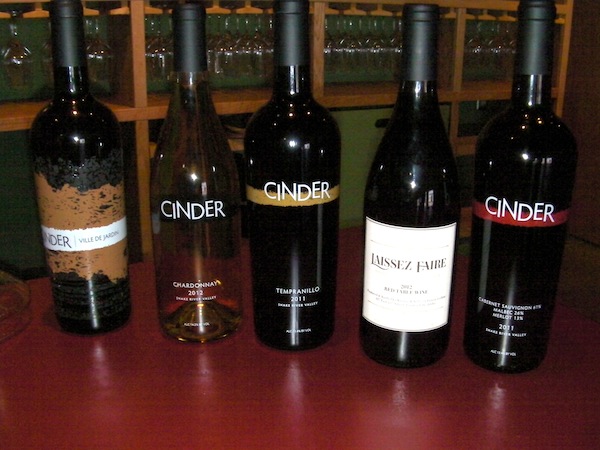
Krause created Cinder with 2006 vintage
There’s momentum to the Idaho wine industry now, and Krause has been a driving force behind it since she launched Cinder in 2006.
Last fall, Krause’s wines received acclaim in famed British writer Hugh Johnson’s annual Pocket Wine Book, and its scouting report of Cinder read a “breakout Idaho winery making small amounts of marvelous Viognier, a unique Mourvedre/Tempranillo blend and very good Syrah.”
The guide’s three-star rating for Cinder places it on par with many of Washington state’s top wineries. No other Idaho winery received as many stars.
“Cinder has had a tremendous impact on the Idaho wine industry,” said Moya Dolsby, executive director of the Idaho Wine Commission. “They are truly leaders. They are setting an excellent example of how if a winery works hard to make good wine and goes out there to sell it, then success can be had.”
In hindsight, Krause would have achieved commercial success in Walla Walla or the Columbia Gorge, but she believed enough in the future of Idaho, the Snake River Valley and her native Boise to make it home to Cinder Wines.
“The whole time I was working in Washington, I was coming back to Idaho and exploring the vineyards and tasting the wines and thinking, ‘Hmm, this place has a ton of potential,’ ” she said. “When my husband and I decided to start our own winery, we chose Boise, first for the climate and the idea we could make world-class wines here, and second for the business climate and third, it’s an amazing place to live.”
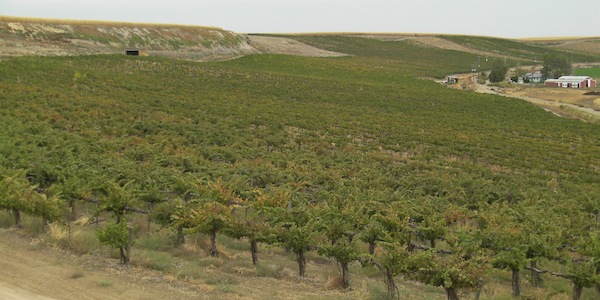
First commercial Syrah made headlines
Perhaps it’s not surprising that critical acclaim for Krause’s wines came before Boise truly embraced them. The 2006 Syrah from her first commercial vintage received Wine Press Northwest magazine’s top rating of “Outstanding!” and Cinder earned the regional publication’s Idaho Winery to Watch award in 2009. That same year, Wine Business Monthly named Cinder one of its “Hot Small Brands of North America.”
In 2012, Wine Press Northwest named Cinder as the Idaho Winery of the Year.
The promise of success allowed Schnerr to transition from Micron Technology, where he was a chemist, into his role as business manager for Cinder. Their teamwork allowed Cinder to responsibly grow production from 1,000 cases to 4,000 cases a year, which doesn’t include the winemaking Krause does for award-winning Huston Vineyards in nearby Caldwell.
“Most of my experience in Washington has translated pretty easily here, and it’s fun to be in a cutting-edge region,” Krause said. “We’ve got a fairly big population here in Boise that didn’t have an indigenous wine industry, so we’ve had a great reception and sell a really high percentage of our wine right out of the door.”
And some of the same varieties that the Columbia Valley has gained a reputation for are helping Krause succeed in the Snake River Valley.
“It’s a pretty similar climate to Washington,” she said. “It’s a little higher elevation, but it’s farther south, so they seem to balance each other out. It’s a high-elevation desert, essentially. Grapes like that intense sunlight and cool nights. There are subtle differences, and we’re still unraveling them.”
Tempranillo, Rhône varieties signature wines at Cinder
Three varieties in particular — Syrah, Viognier and Tempranillo — have piqued Krause’s interest, and that fascination shows in her wines.
 “Viognier is the one variety that caught my eye when I was tasting the wines before I moved here,” she said. “It’s so aromatic here, and in terms of the body and the texture and alcohol percentage, they are making very well-balanced wines, not like the real overblown Viogniers you will see sometimes in other regions.”
“Viognier is the one variety that caught my eye when I was tasting the wines before I moved here,” she said. “It’s so aromatic here, and in terms of the body and the texture and alcohol percentage, they are making very well-balanced wines, not like the real overblown Viogniers you will see sometimes in other regions.”
That explains why there are two styles of Viognier made at Cinder — dry and off-dry. That off-dry Viognier is the closest Krause gets to a sweet offering.
“Joe keeps asking about a dessert wine, but I haven’t made one yet, so we’ll see,” she said.
Syrah and Tempranillo have performed well in part because they are early ripening varieties.
“I’m not too worried about early frost, and they seem to enjoy the intense sunlight, so I’m really bullish on them, too,” she said. “In my five years here, our first frost date has usually Oct. 31, which is very similar to Washington, so we’re not talking about incredibly shorter growing seasons. We make good Merlot and Cabernet Sauvignon as well, it’s just that I like Syrah and Tempranillo a little bit better.”
Her early work with Syrah also includes her dry rosé that was ahead of the curve for much of the Pacific Northwest — and especially Boise.
“We make 200 to 300 cases of it each year and sell it out by the middle to the end of summer,” she said. “It does sell well, but it’s pretty niche still. Even though we keep saying roses are in, we haven’t decided to expand it yet.”
Snake River Valley ripe for new vineyard plantings
In order for the entire Idaho wine industry to take the next step, Krause said winemakers need more vineyards in the Snake River Valley.
“I have grapes being planted for me to help me grow in the next few years, but I think we are going to have a grape shortage around here for a few years,” she said. “It might cause some short-term pain, but I think it will be good in the long run for driving up prices and encourage people to get new vines in the ground.
“I’d love to see two or three more vineyards come in with new sites and people with professional viticulture experience behind them so we could have some new stuff to try,” Krause continued. “The number of large vineyards here is really small. They are doing a great job, but there’s so much to explore and so much potential.”
Despite Krause being raised by hobby gardeners, Cinder’s business model hasn’t included estate vineyards or a tasting room in wine country. After all, their goal was to market and sell in the state capital.
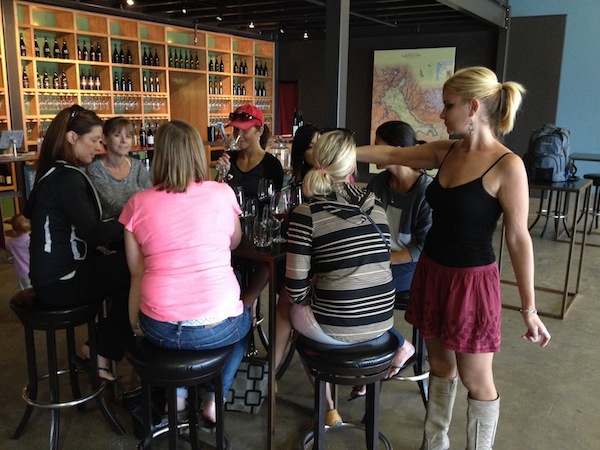
Cinder finds home in Garden City warehouse
Plans fell into place when they came upon a former fruit and vegetable processing warehouse in Garden City, a Boise bedroom community. That warehouse soon became the Urban Winemakers Cooperative, and it’s now home to not only Cinder but also Coiled, Telaya, a full-time lab/education center operated by winemaker Kathryn House and Krause’s custom-crush business.
“That’s been a critical piece of luck — to find this building to lease,” Krause said. “There are huge marketing implications to being close to population.”
Last year’s expansion and remodel also allowed Krause and Schnerr to create an urban winery experience similar to those in Portland. Rolling garage doors have even turned Garden City into a summer night spot.
“We’ve been holding some events and wedding receptions, and people will come by on their way home from work — every day of the week — and we sell them wine,” Krause said. “They seem to enjoy the atmosphere, and that’s been a real boon to our business.”
Recognition for Krause and sales of Cinder wines didn’t come immediately.
“The reception has gotten better and better the whole time,” Krause said. “What started as a trickle has become a stream. It was certainly difficult to sell my wine the first year I went around, and now it’s just so easy. The first year, I had to bang down people’s doors and force my wine down their throat because they weren’t enthused with Idaho wine.
“Now, that sense has totally turned around,” she continued. “We have people calling, ‘Hey, I need an Idaho wine on my menu.’ That never happened two years ago. The momentum is really exciting. It’s been building the last couple of years, and this last summer, our company and other Idaho wineries have had an incredible increase in sales.”
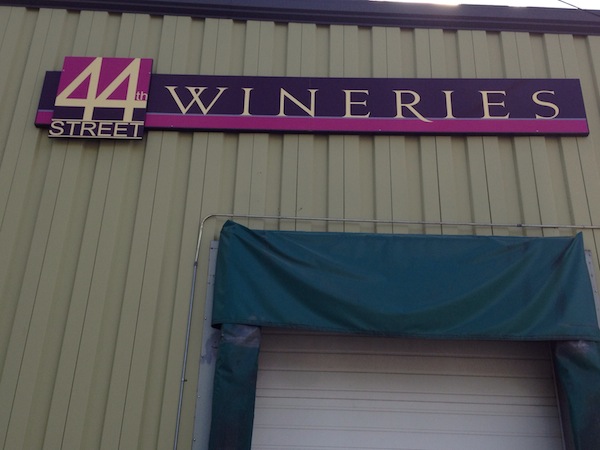
No plans to grow beyond 10,000 cases
Thanks to the expanded Urban Winemakers Coop, Cinder has room to double in terms of production.
“Somewhere between where we’re at now and 10,000 cases, we’ll find a sweet spot,” said Krause, an avid mountain biker, skier and camper. “That gives us pretty good margin, and we won’t have to distribute so widely that we’re constantly on the road while maximizing the productivity of this space. We’ve built it into a comfortable company where we have enough employees that we can step back and take a vacation once in a while.”
She recently “fired herself” from the cellar, which has given her more time to focus on winemaking and — more importantly — raise a family.
“If we had children three years ago, we’d be talking about a much higher stress situation,” she chuckled.

Leave a Reply